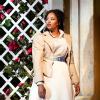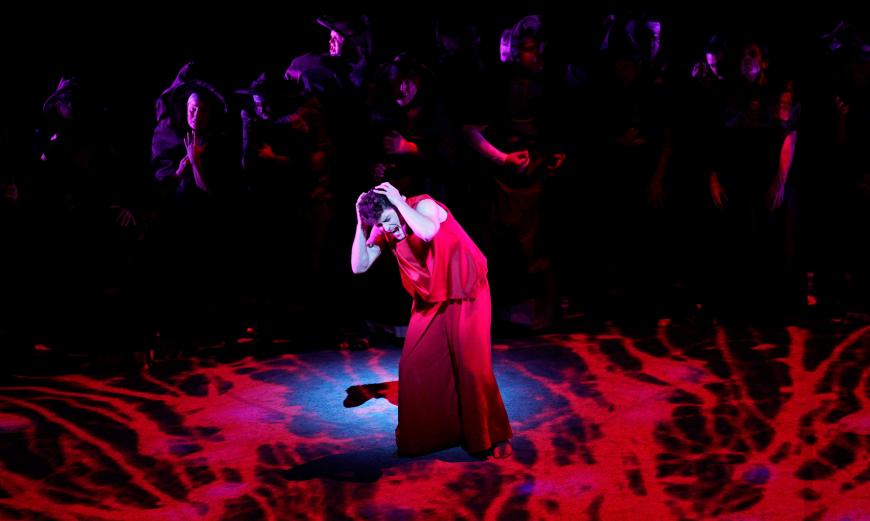
Of the dozens of Orpheus operas, two are best known — Claudio Monteverdi’s L’Orfeo from 1607 and Christoph Willibald Gluck’s from 1762. The latter’s Orpheus and Eurydice is San Francisco Opera’s final offering of the fall season, in a passionate but unbalanced production that opened Nov. 15 and runs through Dec. 1.
The Orpheus story is compellingly passionate. Orpheus and Eurydice are no sooner married than she dies of a snake bite. Pursuing her to the underworld, Orpheus charms the powers of hell with his music. They allow him to take her back — with one injunction: He must not look at her. That rule is too harsh; he breaks it, and she dies a second time.
In some versions, Orpheus lives on in misery. But Gluck and his librettist Ranieri de’ Calzabigi created a happier ending: Cupid intervenes, reviving Eurydice and reuniting the couple. It wasn’t just the ending that made Gluck’s version remarkable in its time. In one stroke, he and Calzabigi did away with the stagnant conventions of Baroque opera — stilted acting, complicated plots, and long-winded arias. Their opera was shorter and tighter, getting at the story’s key emotions of love and grief.
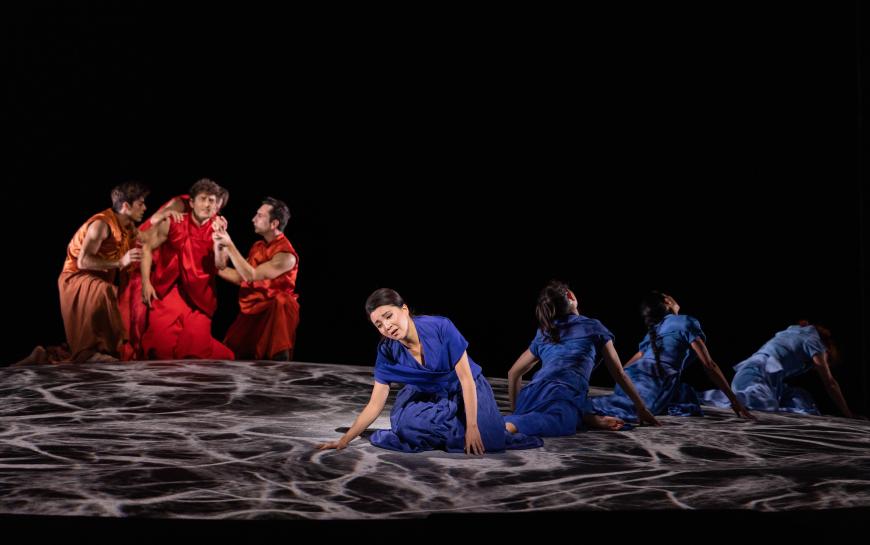
In this production, Orpheus is sung by Jakub Józef Orliński, in his company debut. The young Polish countertenor is widely followed on social media for his singing and for his breakdancing — of which we saw an example in the opera’s opening scene. The splendid Eurydice is Chinese soprano Meigui Zhang, well known at SF Opera for her recent appearances.
Director Matthew Ozawa focused on grief to the near exclusion of Gluck’s insistence on grace and resilience. Orpheus — onstage for the entire opera — was consumed by a sorrow that seemed to have landed deep in his body. With a stern and almost grotesque athleticism Tuesday, Orliński seemed to writhe in pain, with few moments of solace in evidence. His struggle was amplified by three non-singing dancers (deftly choreographed by Rena Butler) who mirrored him. Three others accompanied Eurydice, and together they reinforced the lovers’ enforced alienation and the anguish of their journey back from death to life.
Much of the action was performed on a stage floored with projected neuron scans of traumatized patients (though, unfortunately, those images were barely visible to the audience on the orchestra level). Other than a squat knoll-like platform, the stage was largely bare, although compelling lighting design by Yuki Nakase Link brought vivid expressivity to the space.
There was not much room for happiness, even amidst the “Blessed Spirits,” who — Eurydice included — are granted an afterlife of bliss. Gluck, in his revision of the score for the Paris production of 1774, wrote an extended dance sequence for them, and it became perhaps his best-known piece of music. Because this production used the original score of 1762, we got very little of this soothing and tender music. Indeed, it would have been difficult for these spirits to have danced it: They were shrouded and static, oblivious to the beauty that Orpheus describes in the elegantly orchestrated aria “Che puro ciel” (How clear the sky). Orliński’s sweet delivery of the song brought out his tender lyricism and expressive musicality, but his aria was undercut by the sight of Eurydice, shrouded and puppet-like, floating across the stage behind him on a wire. A further oddity in this scene was a rank of some dozen lighted swings lowered from the flies: Occasionally some spirits sat on them, but most of them remained unused. Were they intended to evoke those pleasant swings in French Rococo paintings? If so, they needed to be actually swung upon.
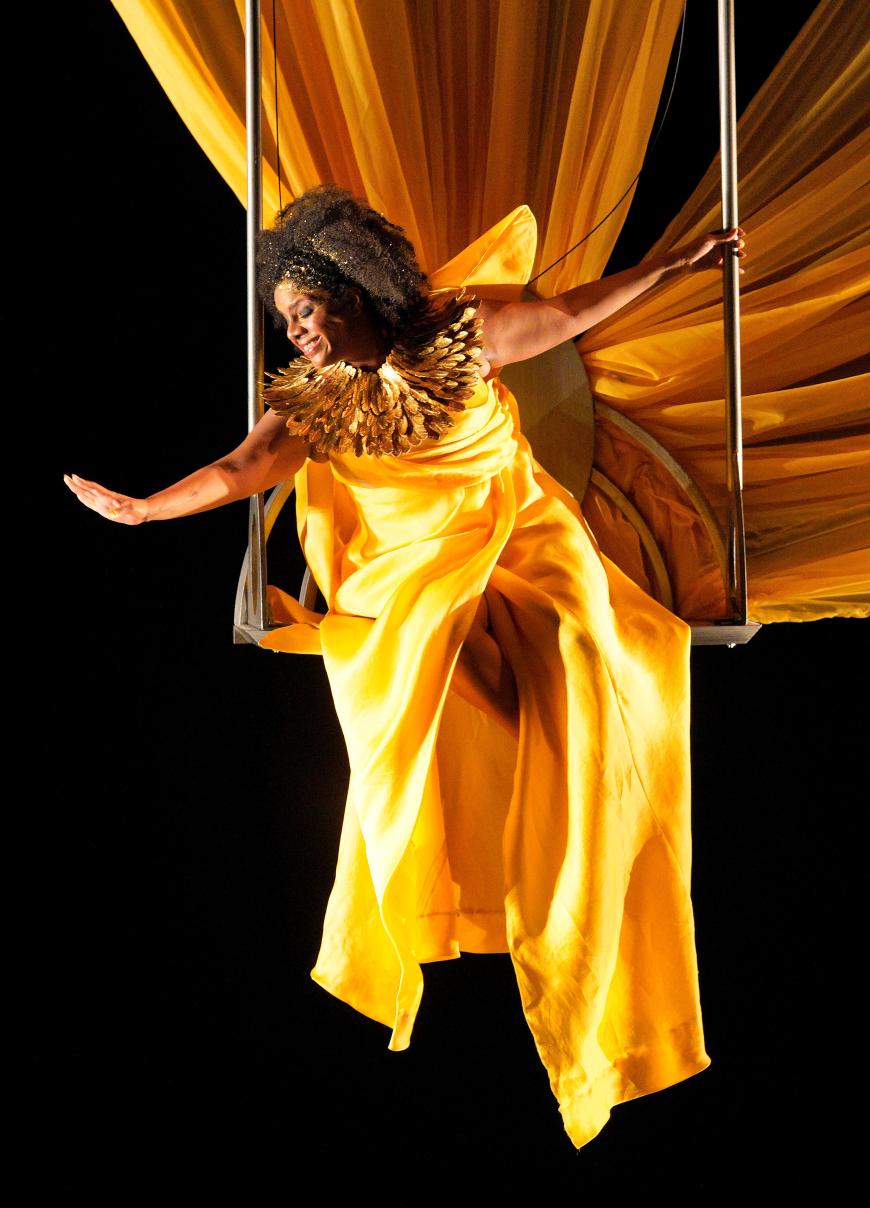
Eurydice is the focus of Act 3, as she tries — and fails — to understand why Orpheus will not look at her. In her climactic aria, “Che fiero momento” (O bitter moment), Zhang masterfully conveyed Eurydice’s love as well as her grief. Zhang’s voice is clear and nimble, perfectly suited to Gluck’s aria with its expressive changes of rhythm and its trajectory of passion. We could at last see how much Eurydice loves Orpheus — that if he’s not in love with her, she chooses not to live. It helps us see, too, how much Orpheus loves her: As she collapses in grief, he realizes that to love may mean to break the rules. He looks at her, and as he knew would happen, she dies.
Gluck didn’t let the opera end in that place of grief. But in Ozawa’s production, Cupid (sung by soprano Nicole Heaston with a saucy indifference to human foibles) was grandly lowered from above stage on a “throne” draped in gold — and some of the deus ex machina effect was dulled by the fact that she had appeared in the same way in Act 1. We got a bit too much of the production logistics that 18th-century writers called “machinery” and that Gluck tried to avoid.
The excellent SF Opera Chorus, prepared by John Keene, had a busy night, with three big costume changes. The choristers were especially effective as the wretched guardians of the underworld, fiercely denying passage to Orpheus and then won over by his singing, which wakens their own memories of love.
The orchestra, conducted by Baroque specialist Peter Whelan, played on modern instruments. While this is probably necessary to fill the big space of the War Memorial auditorium, Gluck’s music suffered. In particular, his graceful woodwind parts, intended for wooden flutes and oboes and for the lovely early clarinet known as the chalumeau, lacked the necessary warmth and articulation. Even more unbalanced were the extensive recitatives (the sung parts of the music that are not full arias), for which Gluck wrote expressive string accompaniments, which are best played by small forces. Here they were given to a larger group — perhaps the entire string section — and sounded less nimble and focused than they should have.
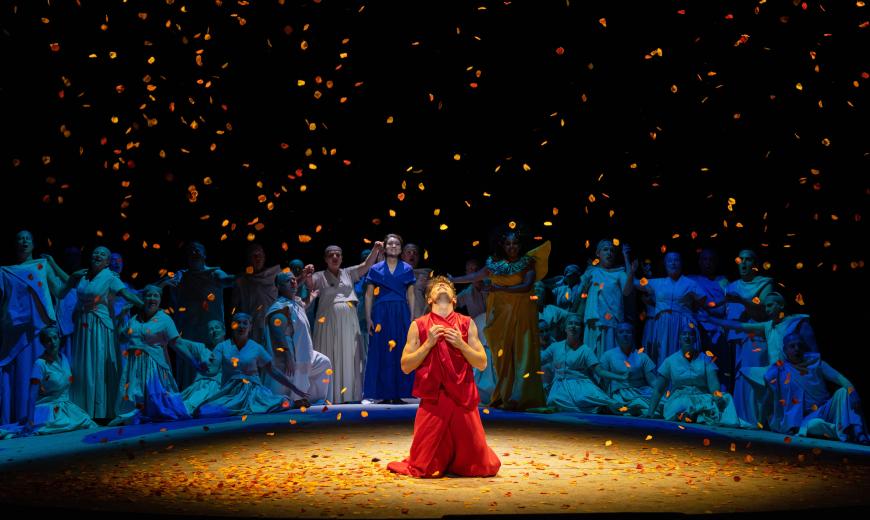
A final comment on balance: Perhaps because of the overgenerous use of the orchestra, and because of some quirky acoustics, the principals’ voices were often hard to hear — especially when the singers were center stage on the top of the revolving knoll. Fortunately, Zhang’s Act 3 aria was set at the front of the stage.
It may well be that Ozawa’s strong directorial interpretation, focusing on alienation and trauma, is designed to reflect our times of climate disaster, political corruption, and disease. His recent SF Opera production of Beethoven’s Fidelio effectively did so, emphasizing incarceration and bureaucratic abuse. Beethoven’s heroic music can support such an ambitious production. But Gluck’s lighter, more graceful score works in a different way, asking for a more balanced approach.
Editor’s note: This article has been updated to reflect more accurately the performance and production history behind Gluck’s “Dance of the Blessed Spirits.”




